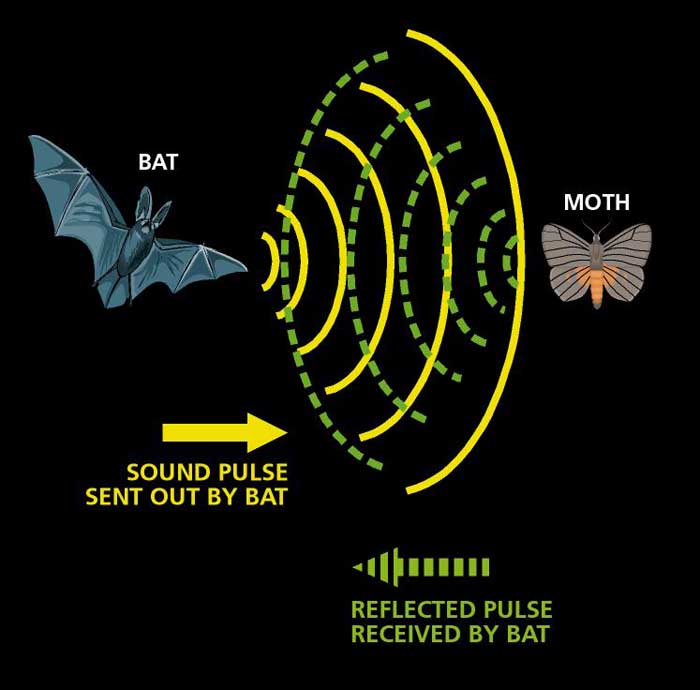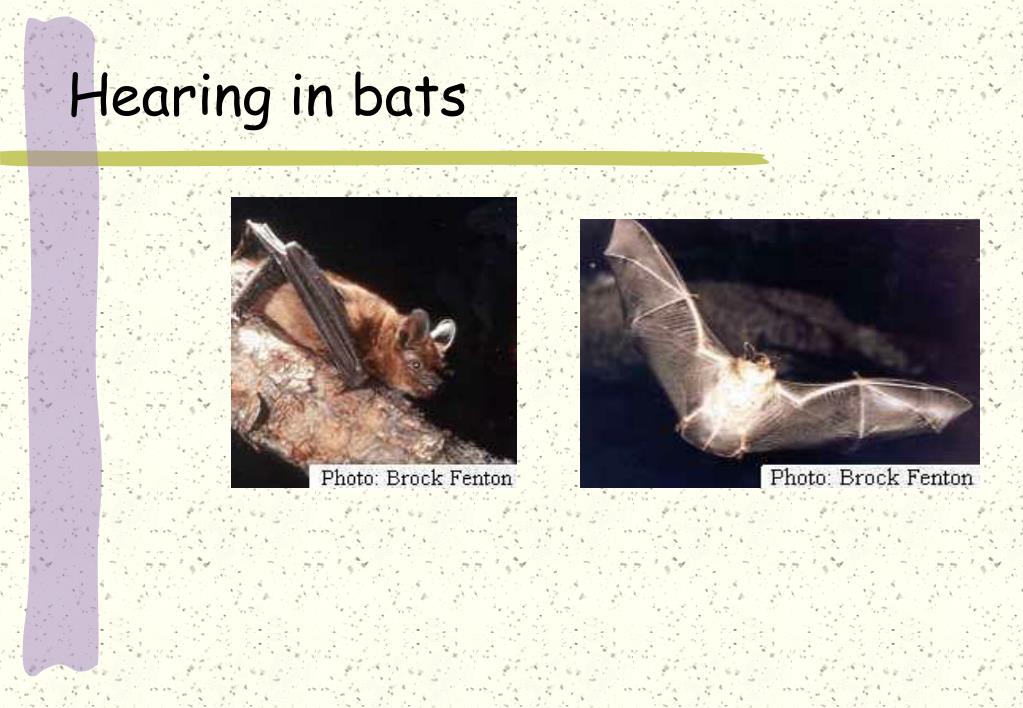

Detection thresholds measured 20 min, 2 h or 24 h after exposure did not vary significantly from pre-exposure thresholds or from thresholds in control (sham exposure) conditions. 20 µPa rms, 1 h duration sound exposure level 152 dB). The hearing sensitivity of seven big brown bats was measured in active echolocation and passive hearing tasks, before and after exposure to broadband noise spanning their audiometric range (10–100 kHz, 116 dB SPL re. We hypothesized that bats may have evolved a mechanism to minimize noise-induced hearing losses that otherwise could impair natural echolocation behaviors. Echolocating big brown bats ( Eptesicus fuscus) live in extremely intense acoustic environments in which they navigate and forage successfully, both alone and in company with other bats. Susceptibility to these hearing losses may reflect the relatively quiet environments in which most of these species have evolved. “Some of the species we tested are very rare and there is very little known about their diet and hunting behavior,” Geipel explained, “but with our measurements of the auditory abilities of these species, we can now predict how they hunt and which types of prey is likely to be their specialty.In many vertebrates, exposure to intense sounds under certain stimulus conditions can induce temporary threshold shifts that reduce hearing sensitivity. In contrast, the common big-eared bat, Micronycteris microtis, previously shown to take silent, non-moving insects from leaves using only its own echolocation, has very sensitive hearing in the high frequencies, at which high resolution is important for prey detection. The similar sized white-throated round-eared bat, Lophostoma silvicolum, heard best in the frequency range of the courtship of katydids, their favorite food. “We found that bat species that hunt by listening to the sounds of their prey are much more sensitive to low frequency sounds than bats that only use their own echolocation for hunting.”įor example, the frog-eating bat, Trachops cirrhosus, is highly sensitive to the frequencies that túngara frogs (one of its favorite prey species) use to attract mates. “As we suspected, all the bats in our study had a very good hearing in the frequency range of their own echolocation calls.” Geipel said. These species have very similar hunting behavior but show slight differences in their preferred food items. There are many different gleaning species in the bat community in Gamboa, Panama. Gleaning bats catch their prey from vegetation or from the forest floor. To test the role of hearing sensitivity in niche differentiation, Inga Geipel, Ella Lattenkamp, co-lead author from the Ludwig Maximilian University, Munich, Germany and Rachel Page, compared hearing in 12 closely related gleaning bat species. But many species also listen for the lower frequency sounds produced by their prey, for example the rustling sounds prey makes as it moves through leaf litter, or the courtship songs of katydids. They use high frequency sounds they produce themselves (echolocation) to orient and hunt.

“Studies looking at bat species diversity and niche differentiation typically compare diets or foraging behavior,” said Inga Geipel, STRI Research Associate and Marie Curie post-doctoral fellow, and lead author of the study, “but we think that bats’ ability to sense different kinds of prey could play an important role in the high diversity of species we see in the tropics.”īats are well known for their sophisticated skill to use sounds to navigate their environment.


 0 kommentar(er)
0 kommentar(er)
